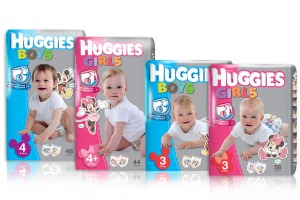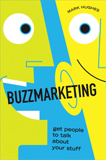 |
|
Written by ZOOZ
consulting and training | (972)-9-9585085 | [email protected]
| www.zooz.co.il
|
| Issue 84 |
Hello!
We are pleased to send you the new issue of LaZOOZ.
This monthly newsletter is sent as a free
service to thousands of senior executives.
It features different sections each time, and does not include advertisements.
We tried to keep it brief, assuming that your time is precious
and the work is plentiful.
Those who wish to learn more, will find links to articles and relevant information sources.
We hope that you will find the newsletter useful. We will be happy to receive any comments and suggestions.
Pleasant reading!
Ari Manor, CEO, ZOOZ
|
|
Details
An interview with a senior executive
|
Shoshi Brukner, CEO, Terraflex
-
Number of company
employees
:
2Approx. 56 permanent and 15 temporary in Israel. Nine employees are my direct subordinates.We provide:
PVC compounds and other plastic materials for the plastics industry. We also produce a wide variety of hoses/tubing for various industries: gardening, agriculture, industry, construction, and more.
I have been in my
position for
: Approx. two years and two months as the company CEO. I also serve as a member of the board for the Haifa Port. Before that I served as the VP of Finance and Business Development at several companies, including Tadbik and GES from the Granite Group. I have a B.A. in Economics and Accounting from Haifa University, and an M.B.A. from Tel Aviv University.
What I like about the job:
The excitement of developing a new
product. We develop a relatively large number of new
products, which is challenging. I also love the
feeling when a new customer joins us, and the
challenges associated with recruiting new customers.
I also enjoy the positive atmosphere at the factory,
and the relationships with the company’s employees.
The most difficult part of the job:
Dealing with cash flow problems. I started working as CEO when the factory was in a tough position. The company is now recovering and seems to be on the right path, which we are determined to continue on.
Goals I want to
attain
: I want the recovery process to succeed so that I can free up even more to concentrate on developing new products. I really believe in the factory and in saving Israeli industry, even at the cost of subsidizing activities, on condition that they are economically justified on a global level, in the long term. I hope that Israeli industry and pride don’t get pushed aside after the elections, because our products are in demand worldwide. I would really like for the factory to succeed, and to be a source of pride for the country and our employees.
Our vision:
One of the first things I did at the company when I became the CEO is to check the expedience of keeping the factory open and running. I came to the conclusion that there is a huge potential for profit, which led us to define our vision: to develop new products that incorporate technology, knowledge and innovation – as befits the Israeli mind. To grow and blossom and bring pride to Israeli industry and to the company employees.
Original products
in the
field
:
Dairy tubing with innovative materials that do not clog or kink, so that milk can flow through the pipe without other substances leaking in during the milking process. The product has received global exposure and we are currently the world’s top manufacturer of dairy tubing and equipment.
Sources of innovation:
Two main ways:
(1) An amazing R&D team. For the most part, the ideas are raised during a joint thinking process. Sometimes one of the employees thinks of an idea and presents it to the team, and then we start analyzing and working on it together. We have a good atmosphere that encourages innovation through sharing.
(2) Staying in touch with customers. We visit our customers and see where we can develop new products and solutions. Some customers also approach us with their needs.
Recommended professional book:
:
Lehagshim (in Hebrew) [To make something come true] by Eran Stern. It’s a great book that gives tools and inspiration, and simply touches the right places.t.
Contact us
|
|
|
Education
A must-read book for managers
|
Buzzmarketing: Get People to Talk About Your Stuff / Mark Hughes / Portfolio Trade Publishers
Mark Hughes was the Marketing Manager at several companies, and is the CEO of Buzzmarketing, the online advertising agency that specializes in creating a buzz and word of mouth marketing. In his book,
Buzzmarketing, he explains how you can turn products or services into interesting stories that people talk about with others and that journalists write about. You can market effectively this way, save expensive advertising fees, and systematically amass success stories and marketing hits.
Buzzmarketing was published in 2005 and was all the rage in its day because it exposed proven maxims of spreading rumors and stories about brands; maxims that were not commonly known or understood at the time. Now, with the spread of the social media and the rise of the bloggers, the maxims that the book teaches have become even more relevant and effective.
Among other things, Buzzmarketing describes six buttons for creating a buzz – six topics that prompt people to raise a subject and talk about it with each other. A buzz button can be pushed several ways, including by means of commercials. But, in contrast to regular commercials, these are commercials that generate interest and a conversation topic, and are therefore more effective.
The six buzz buttons includ:
1. The taboo button: sex, lies, toilet humor. For example – commercials like
this one, for Viagra.
2. The unusual button, such as an online dating site for overweight people (OverweightDate.com)
3. The outrageous button. For example, this Benetton commercial, where the Pope kisses a Muslim imam.
4. The hilarious button. For example,
this commercial, that had several sequels (such as
this).
5. The remarkable button. Making people talk about something they normally wouldn’t. For example,
this commercial for Pep Boys brakes, which was also accompanied by an in-store commercial campaign where the employees wore pins with a picture of the moose from the commercial saying “Ask me about Raybestos brakes.”
6. The secret button: For example, the rumors that circulate each time Apple is about to announce a new product.
Later in the book, maxims to achieve a
media buzz are also described. Articles published in a paper get 6 times more attention than ads published in the same newspaper, and they are also perceived as more reliable than the ads, states Mark Hughes. Therefore, grabbing the journalists’ attention is the main goal in creating a buzz. The book details how this can be done by creating and spreading a media story of the type that journalists love to write about: a David and Goliath story, a controversial story, a scandalous story, a story associated with a famous personality, or a story related to hot topics that are already in the media..
Buzzmarketing also contains plenty of fascinating examples and success stories of creating a buzz among potential customers and journalists, and exposes additional rules for achieving prominence in advertising, managing outstanding campaigns by taking risks, identifying creative ideas, and creating a buzz and esprit de corps inside your organization as well. If you want to market more effectively while saving marketing costs, don’t miss out on this book!.
-
For a more detailed breakdown of the six buzz buttons,
click
here
-
Buy
the book at
:
Amazon |
Barnes&Noble
-
A list of additional must read books for managers appears:
Here
|
|
|
Invention
An innovation which
surprised the world market and competitors
|
I Made a Wee-Wee!
About the invention of disposable diapers
The first disposable diapers were developed by entrepreneurial women in the late 1940’s.
In 1946, An American inventor named
Marion Donovan sewed a waterproof cover from her shower curtain to wear over the reusable cloth diapers that were so common during that period. The waterproof cover that Marion developed, called the Boater, began being sold in 1949 at the Saks Fifth Avenue flagship store in New York. In 1951, Marion wisely sold her patent for waterproofing diapers for one million dollars, an absolute fortune in those days.
In 1947, a British housewife named Valerie Hunter Gordon was fed up with the incessant laundering of her cloth diapers and developed a two-part system – a disposable absorbent pad (that contained a layer of absorbent paper and a layer of cloth padding), and a reusable external plastic cover (that she initially sewed from parachute nylon). The diaper that she developed was also adjustable at the legs/hips to ensure a better seal.
Valerie, who was 24 years old then, a mother of three and the wife of a military man, sewed 400 diapers by herself and gave many of them away to her friends – also army wives. Her collaboration with the Robinson company, a textile manufacturer that developed disposable diapers back in 1930 (but not waterproof), gave birth to
Paddi – the first modern, commercially-produced disposable diaper. The Paddi, which was initially distributed at the British Boots The Chemist stores, was very successful in Britain, and later worldwide.
In the 1950’s, several other companies, including Johnson & Johnson and Playtex, began to manufacture disposable diapers. In the early 1960’s, Procter & Gamble began to market Pampers diapers, and Kimberly Clark launched the Huggies diaper. Diapers were now made from only one part that included a layer of padding, an absorbent layer, and a waterproof layer. The disposable diaper market boomed and the competition between these two companies, which lead the market to date, led to many improvements in diapers. Among other things, diapers were developed with several absorbent layers that contain polymers that can absorb a much larger volume of fluid, and flexible adhesive tabs that can be reopened and closed.

Additional innovations that were developed in diapers include diapers that change color when they are saturated with fluid, scented diapers, diapers with cream to prevent redness, and pull-ups, which closely resemble underwear.
Huggies recently launched sex-specific diapers for boys and girls that differ in the position of the absorbent centers (in front for boys and at the bottom for girls – according to their anatomical makeup). This is a classic example of
adding a dimension, which elicits the question of “Why didn’t anyone think of this sooner?”
It’s hard to believe that only 50 years ago most families still hand-washed cloth diapers, day in, day out. In fact, the invention of the disposable diaper was a huge step in women’s emancipation, enabling them to go out and work, take trips with their families, and free them from the dirty and time consuming labor that cloth diapers entailed. Valerie Hunter Gordon, the inventor of the Paddi – the first disposable, waterproof diaper, was interviewed on this topic, and she stated that thanks to her invention she could afford to expand her family, and ended up raising six children.
And even though there is some controversy surrounding disposable diapers and the environmental damage that they cause, most of us would undoubtedly not want to go back in time. Progress, by nature, marches forward...
|
| |
|
|


